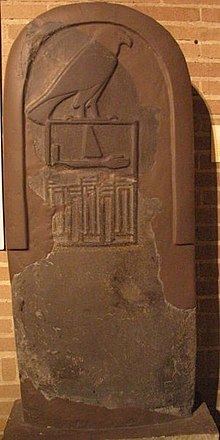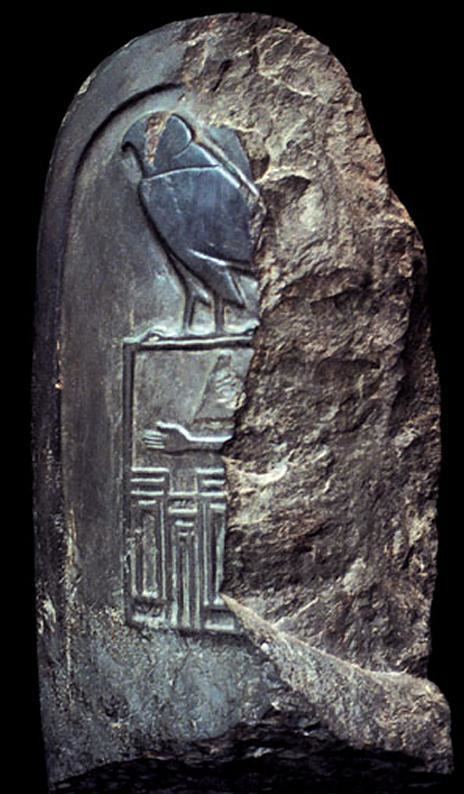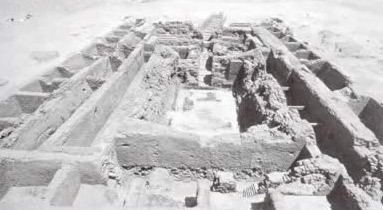Burial Tomb Q, Umm el-Qa'ab Children Perneb | Parents Semerkhet, Anedjib Grandparents Anedjib, Den, Seshemetka | |
 | ||
Reign 33 years, ca. 2910 BC (1st Dynasty) Great-grandparents Den, Djet, Merneith, Seshemetka Similar Semerkhet, Anedjib, Hotepsekhemwy, Seth‑Peribsen, Djer | ||
Qa'a (also Qáa or Ka'a) was the last king of the First Dynasty of Egypt. He reigned for 33 years at the end of the 30th century BC.
Contents

Identity

Manetho calls Qa'a Biénechês and gives him a reign of 26 years. Other versions of copies of Manetho´s epithomes give Óubiênthis and Víbenthis as hellenized names.
Family

The parents of Qa'a are unknown, but it is thought that either his predecessor Anedjib or Semerkhet was his father, since it was tradition to leave the throne to the eldest son. If Manetho suggested correctly (remembering the tradition), Semerkhet was the father.
Reign

There is not much information left about Qa'a's reign, but it seems that he reigned for a long time (around 33 years). Several stone vessel inscriptions mention a second Sed festival for Qa'a, which points to at least 33 years of reign. Indeed, the first festival was usually not celebrated before 30 years of reign, and subsequent festivals could be repeated every third year. The Palermo Stone only mentions the year of coronation and some usual cultic events that were celebrated under every king. The numerous ivory tags dating to his reign also mention only typical arrangements, such as depicting and counting burial offerings and personal possessions of the king. Several mastaba tombs of high officials date into Qa'a's reign: Merka (S3505), Henuka (burial unknown), Neferef (burial also unknown) and Sabef (buried in the royal necropolis of Qa'a).
End of reign

Despite Qa'a´s long and prosperous reign, evidence shows that after his death, a dynastic war between different royal houses began over the newly empty throne. In the tomb of the high official Merka, a stone vessel with the name of a king Sneferka was found. It is unclear whether "Sneferka" was an alternate name of Qa'a or if he was a separate, ephemeral ruler. Egyptologists such as Wolfgang Helck and Toby Wilkinson point to a further mysterious ruler named "Horus Bird", whose name was found on vessel fragments dating to the end of the first dynasty. It is postulated that Sneferka and Horus Bird fought for power and that Hotepsekhemwy ended the fight and finally ascended the throne of Egypt, thus starting the Second Dynasty. Strong clues to that theory are traces of grave robberies and arsons found in the royal tombs of Abydos. Clay seals of Hotepsekhemwy found in Qa'a's tomb suggest that he restored the tomb or buried Qa'a, maybe in an attempt to legitimize his rule.
Tomb
Qa'a had a fairly large tomb in Abydos which measures 98.5 X 75.5 feet or 30 X 23 meters. A long reign is supported by the large size of this ruler's burial site at Abydos. This tomb was excavated by German archaeologists in 1993 and proved to contain 26 satellite (i.e. sacrificial) burials. A seal impression bearing Hotepsekhemwy's name was found near the entrance of the tomb of Qa'a (Tomb Q) by the German Archaeological Institute in the mid-1990s. The discovery of the seal impression has been interpreted as evidence that Qa'a was buried, and therefore succeeded, by Hotepsekhemwy, the founder of the second dynasty of Egypt, as Manetho states. The beautiful tomb stela of Qa'a is now on display at the University of Pennsylvania Museum of Archaeology and Anthropology.
The tomb of one of Qa'a's state officials at Saqqara—a certain nobleman named Merka—contained a stele with many titles. There is a second Sed festival attested. This fact plus the high quality of a number of royal steles depicting the king implies that Qa'a's reign was a fairly stable and prosperous period of time.
A number of year labels have also been discovered dating to his reign at the First Dynasty burial site of Umm el-Qa'ab in Abydos. Qa'a is believed to have ruled Egypt around 2916 BCE. A dish inscribed with the name and titles of Qa'a was discovered in the tomb of Seth-Peribsen (Tomb P of Petrie).
